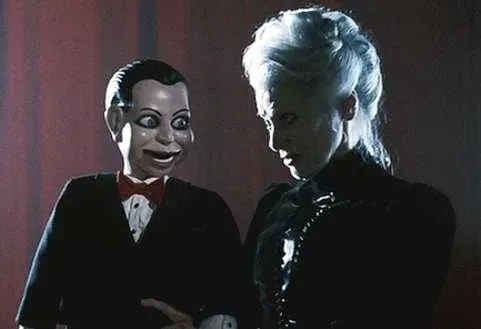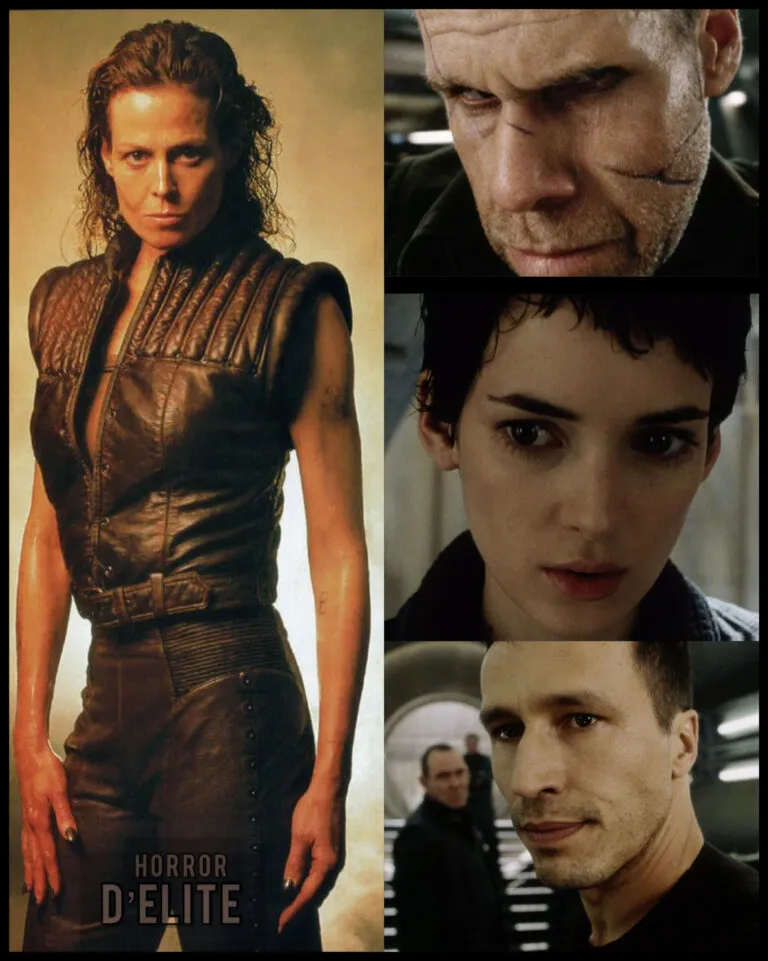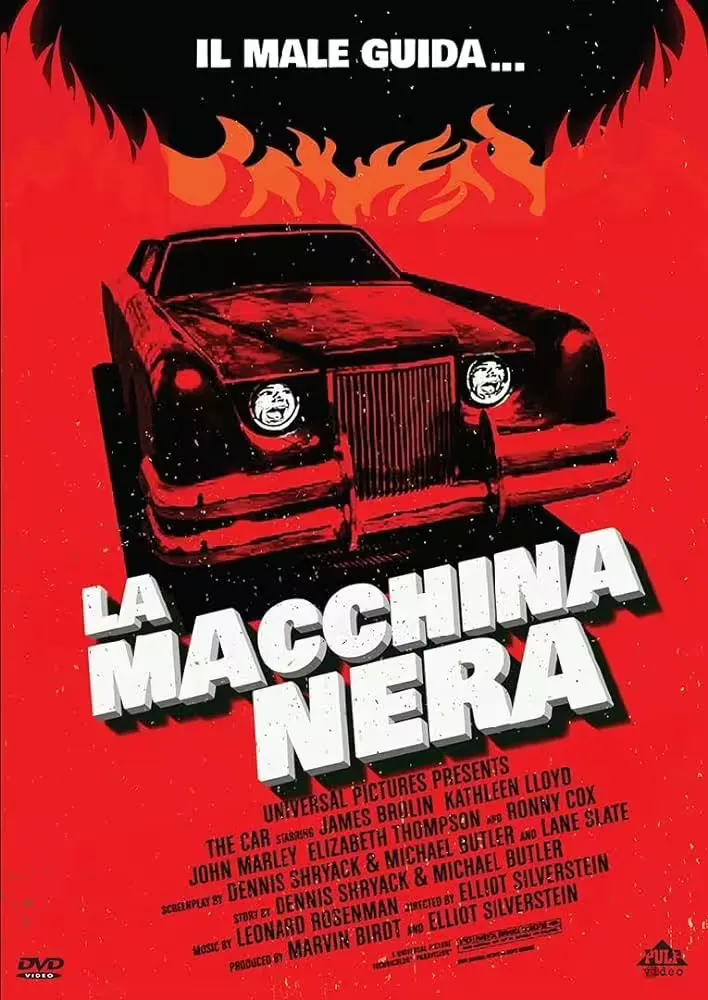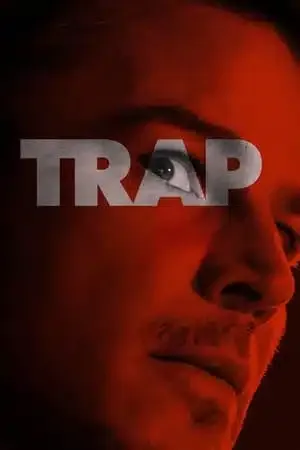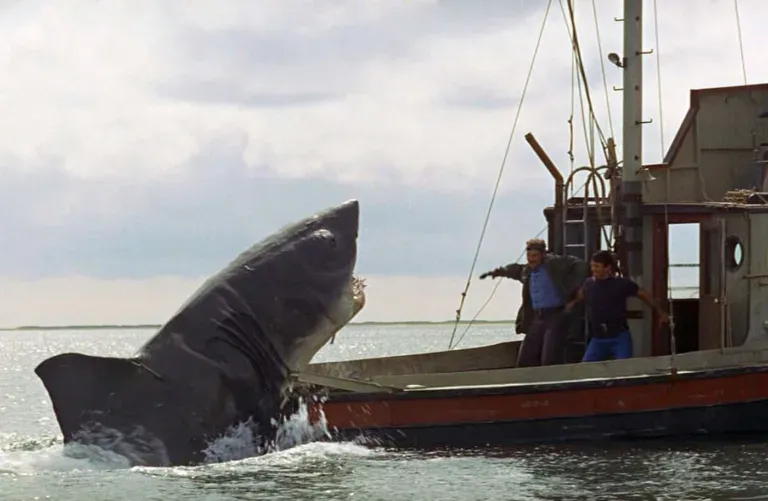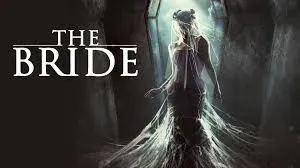The Beyond
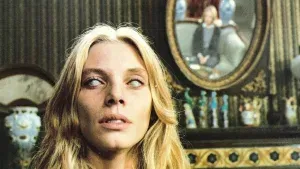 The Beyond (directed by Lucio Fulci, 1981)
The Beyond (directed by Lucio Fulci, 1981)
The film in question is the second installment of Fulci’s so-called “death trilogy,” preceded by “City of the Living Dead” and followed by “The House by the Cemetery.” This is certainly Lucio Fulci’s most visionary horror, as well as one of his most acclaimed films overall. An absolute cult classic of our genre cinema and appreciated worldwide.
The story begins in Louisiana, 1927: the painter Zweick, suspected of witchcraft, is crucified in a cellar of a hotel. At the same time, Emily, a local girl, comes into possession of a mysterious book titled Eibon and discovers that the hotel was built on one of the gates of Hell. The book catches fire in her hands. Louisiana, 1981: Liza Merril, a young girl from New York, inherits the hotel, which is now in poor condition. Liza will soon discover that the hotel stands above the gates of Hell, and when these gates are opened, ancient evil spirits and undead will begin to torment the villagers.
The only way to stop this impending catastrophe is to find the “Book of Eibon,” an ancient tome that contains the key to close the gates of Hell. Together with a local doctor named John and a paranormal investigator named Emily, Liza will embark on a dangerous quest to find the book and put an end to the supernatural threat, but this will obviously not be easy.
All this leads to the enigmatic and unsettling epilogue of the story. An open-ended finale that leaves many questions unanswered. Without revealing too many details, the scene will challenge reality itself, leaving room for many interpretations and reflections on the meaning of the afterlife and the possibility of escaping its power.
 Curiosities, Details, and Production
Curiosities, Details, and Production
Promotional Slogans
“If we told you that this film contains chilling sequences, you might think it’s just advertising gimmicks. We only say to you: ENTER IF YOU DARE!” “Behind this door lie the terrible and unspeakable secrets of Hell. No one who discovers them lives to describe them. And lives in darkness for all eternity.”
Source: Antonio Bruschini & Antonio Tentori, Lucio Fulci, the poet of cruelty, Rome, Mondo Ignoto, 2004.
 What They Said:
What They Said:
Clive Barker, renowned writer (Books of Blood) and director particularly known for Hellraiser, expressed:
“Lucio Fulci is a genius. The best. His ‘The Beyond’ is one of my cult films.”
Source: Filming Death, Lucio Fulci’s Horror and Thriller Cinema, edited by As Chianese and Gordiano Lupi – Il Foglio Editions
Literary References:
The Book of Eibon derives from the imagination of the American writer Clark Ashton Smith and from the Cthulhu Cycle by Howard Phillips Lovecraft, in which the book is imagined to have actually existed in two editions. The haunted hotel with malevolent presences, on the other hand, refers to the novel Shining, written by Stephen King in 1977.
Screenplay:
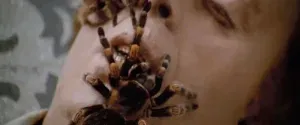 The film originated from an idea by producer Fabrizio De Angelis, who obtained pre-financing from some foreign producers when there was neither a subject nor a screenplay, but only the title of the film.
The film originated from an idea by producer Fabrizio De Angelis, who obtained pre-financing from some foreign producers when there was neither a subject nor a screenplay, but only the title of the film.
Dardano Sacchetti was called in to write the script, author of the screenplays for Fulci’s previous horrors, Zombie 2 and City of the Living Dead. Sacchetti wrote the story of the film in ten days. The model was Henry James’s novel The Turn of the Screw. Subsequently, the screenplay was revised by Giorgio Mariuzzo and by Lucio Fulci himself.
Source: Paolo Albiero & Giacomo Cacciatore, All the Horrors of the World, or … And you will live in terror! The beyond, in The Genre Terrorist. All of Lucio Fulci’s Cinema, Rome, A Different World, 2004.
 Cast:
Cast:
Catriona MacColl had already played the role of the female protagonist in City of the Living Dead. For the protagonist, the Roman director chose David Warbeck, who had already had a role in his Black Cat, and had had an excellent relationship on set with Fulci.
The role of the plumber Joe was supposed to be played initially by Venantino Venantini. The end credits of the film and many sources report that the actor Gianni De Nava played the role. In reality, the role was played by the theater director Tonino Pulci, a close friend of the director.
For the role of Dr. Harris, Ivan Rassimov was initially considered. In the end, Al Cliver, a favorite actor of Lucio Fulci, was chosen.
Emily was supposed to be played by Stefania Casini, who refused the part because she did not want to wear the optical lenses required for the role. In the end, Emily was played by Cinzia Monreale, who starred in Joe D’Amato’s Beyond the Darkness, using the pseudonym Sarah Keller. Veronica Lazar had been Mater Tenebrarum in Dario Argento’s Inferno.
The actress was wanted by Fulci. The role of architect Martin was played by Michele Mirabella, later a well-known television presenter. Fulci did not want a well-known actor for that part. Mirabella showed up for the audition, hiding from the director his past as a commercial actor. When Fulci found out, with material already shot, he got very angry.
Lucio Fulci appears in a cameo, as the librarian who hands the ladder to Martin before he falls to the ground. The extras in the film were recruited from the homeless people of Rome, who were paid with generous doses of whiskey and vodka.
During filming, Fulci (notoriously very tough on his actors, especially actresses) had problems especially with Cinzia Monreale and Antoine Saint-John. The latter even ran away from the set because he was stressed by the continuous makeup sessions.
Source: Paolo Albiero & Giacomo Cacciatore, All the Horrors of the World, or … And you will live in terror! The beyond, in The Genre Terrorist. All of Lucio Fulci’s Cinema, Rome, A Different World, 2004.
 Makeup and Special Effects:
Makeup and Special Effects:
Makeup and special effects for the film were done by Giannetto De Rossi, Maurizio Trani, and Germano Natali. As De Rossi’s usual practice, the effects were created directly on the actors, with the help of some prosthetics.
For the actors who played characters who became blind or were already blind during the film, such as Emily, fake lenses with painted pupils were applied. Especially Cinzia Monreale filmed the entire movie with these lenses on her eyes.
For the scene of the plumber Joe’s eyeball being ripped out, a fake eye was made with a harder front part, while the rest was made of plasticine. The hand coming out of the wall and grabbing Joe is De Rossi’s, although Maurizio Trani claimed it was his.
For the attack of the tarantulas on Michele Mirabella, fake spiders were built, remote-controlled by De Rossi, but six real tarantulas were also used.
The idea of the tarantula entering Mirabella’s mouth and the shot from inside his mouth was suggested by De Rossi. Two mouths were made: one life-size, used for exterior shots, and one three times the size of a normal mouth, used for interior shots. The tongue being ripped out of the mouth was made of latex and had a reservoir filled with fake blood.
Source: Paolo Albiero & Giacomo Cacciatore, All the Horrors of the World, or … And you will live in terror! The beyond, in The Genre Terrorist. All of Lucio Fulci’s Cinema, Rome, A Different World, 2004.
Photography:
The film’s cinematography was entrusted to Sergio Salvati, a historic collaborator of Fulci. To inspire himself, Salvati read a book by the painter Fabrizio Clerici, brought to the set by the production designer Massimo Lentini.
The prologue of the film was shot in black and white, sepia-toned. This gives the beginning a semblance of an old photograph. Salvati used a color tending to sepia, with the help of gels, then toned it during printing. However, for the edition released in German cinemas, the prologue is in color by the will of the distributors. Salvati claims that the German producers printed the prologue in color to highlight the splatter scenes of Zweick’s execution.
The final scene of the film was shot at the De Paolis studios. In the screenplay, the sequence was described in a few words. Once on set, Salvati realized that the sets were very sparse, so he used smoke bombs to create a more suitable atmosphere. But with the smoke machines spreading smoke on the set, the effect desired by Fulci was not achieved, so Salvati had the doors of the set closed, thus the smoke stopped on the ground creating a suggestive effect that is what you see in the shot.
Source: Paolo Albiero & Giacomo Cacciatore, Interview with Sergio Salvati in op. cit., Rome, A Different World, 2004.
Soundtrack:
The film’s soundtrack was composed by Fabio Frizzi, one of the regular collaborators of the Roman director.


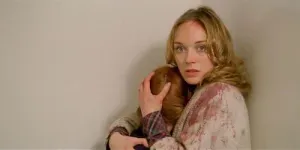 Curiosities, Details, and Production
Curiosities, Details, and Production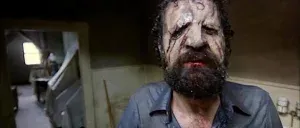 What They Said:
What They Said: Cast:
Cast: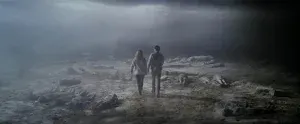 Makeup and Special Effects:
Makeup and Special Effects: